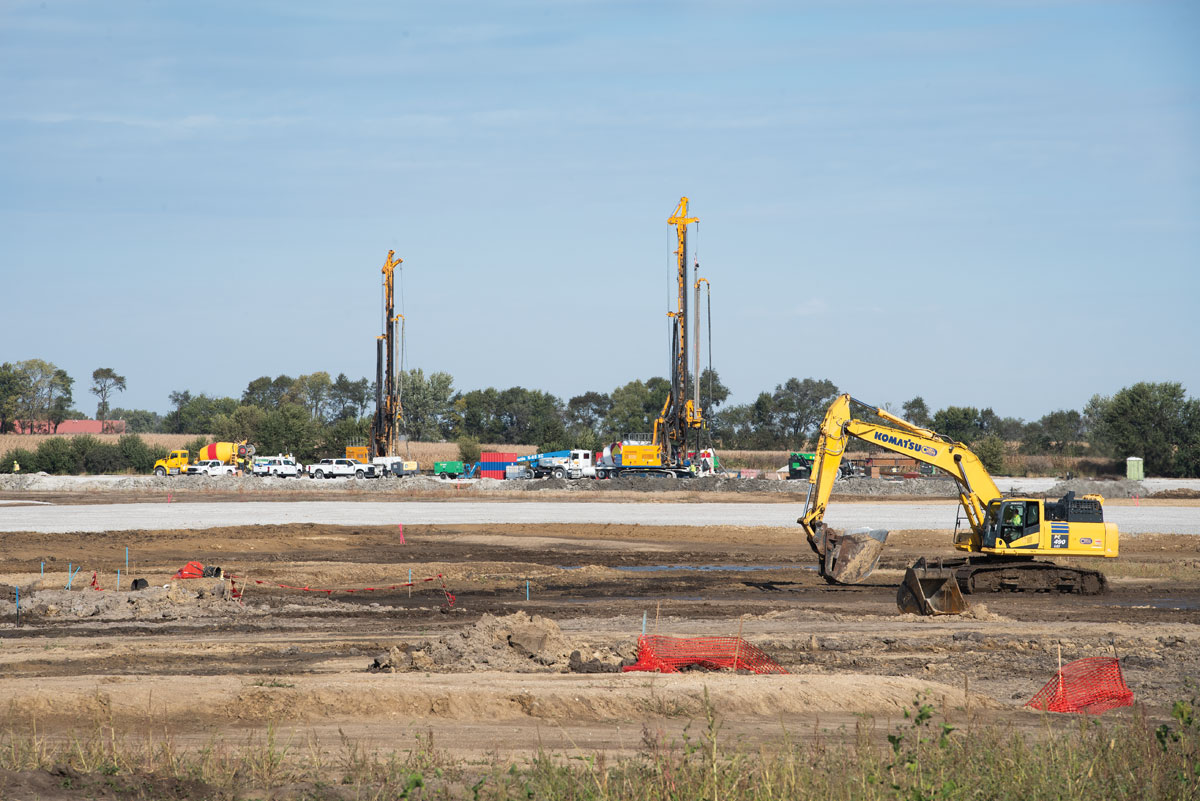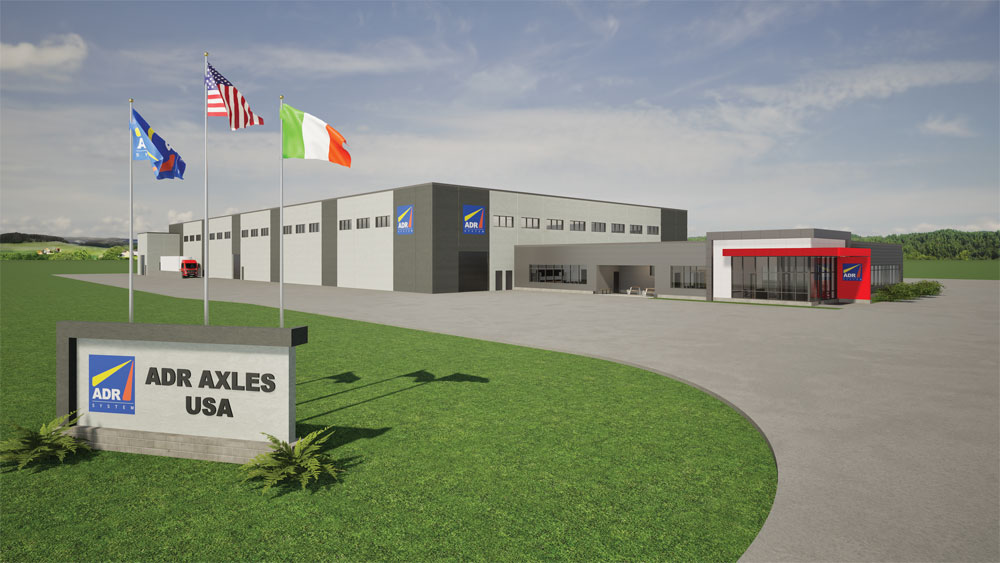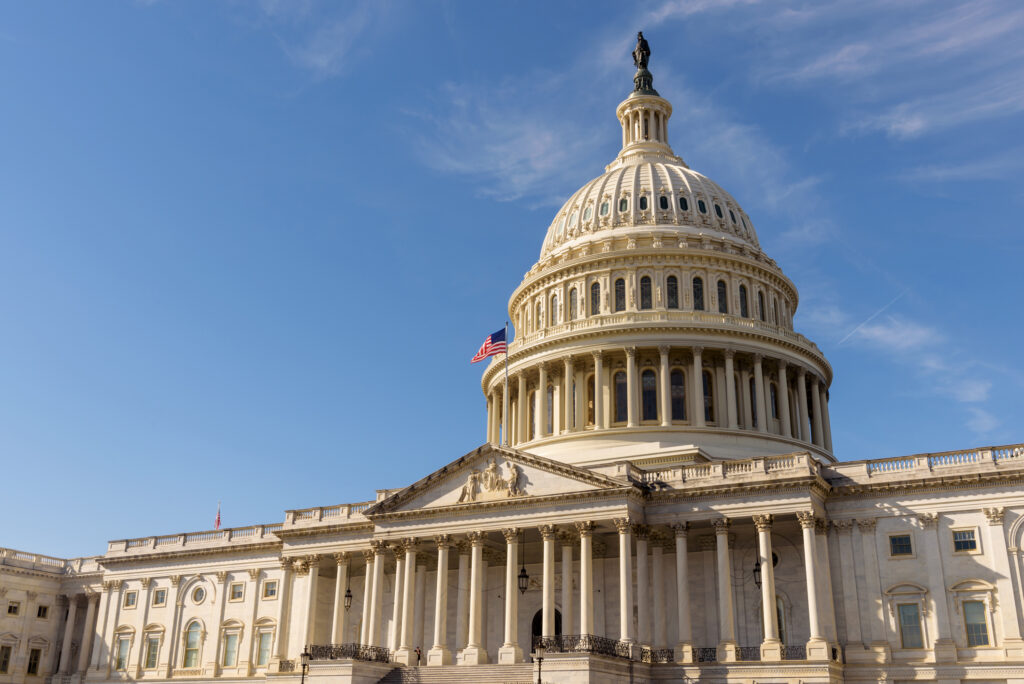Iowa needs more people, homes to attract more manufacturers

Editor’s note: This is the final part of a three-part series about the state of Iowa’s manufacturing sector. Part three covers what Iowa and its communities need to do to attract new companies to Iowa and keep its existing manufacturers. Read part one on Iowa’s manufacturing economy and workforce and part two on the strong ties between manufacturing and agriculture.
About four years ago, Daisy Brand began looking in the Midwest for a large site on which to build a multimillion-dollar dairy processing facility.
The Dallas-based company and leading national manufacturer of sour cream and cottage cheese needed over 50 acres of land with access to a highway, water and other utilities. Access to a skilled workforce was also important.
In spring 2024, Iowa officials announced that Daisy Brand would invest over $626 million in a new production facility in Boone. The company’s president, Ben Sokolsky, has described the facility as “Daisy Brand’s most ambitious project yet.”
The processing facility, slated to open in 2028, is expected to create up to 255 jobs that pay an average hourly wage of $34.75, or over $72,000 annually. The salary is about 20% more than that of an average Iowa worker, which was $61,044 in 2024, U.S. Census data shows.
Economists, though, say that if Iowa is to continue its success at attracting similar projects, the state needs to not only continue providing shovel-ready development sites but also enough skilled workers to fill newly created jobs. The latter may be a difficult task.
In August, the U.S. Chamber of Commerce’s Worker Shortage Index indicated Iowa had a severe shortage of workers. For every 100 open jobs, the state had just 88 available workers, the index showed.
“Any firm that’s thinking about entering this market has to think about whether they’re going to have enough workers,” said Peter Orazem, a professor of economics at Iowa State University.
Iowa’s stagnant population growth
Iowa’s largest industry is advanced manufacturing, which contributes $35.1 billion annually to the state’s economy, according to the Iowa Economic Development Authority. And, according to state data, over 13% of Iowa’s nonfarm workers are employed in manufacturing.
“This sector typically drives the state’s economy,” a 2023 report from Iowa Workforce Development said.
One pressing question is whether manufacturing can continue to be a key economic driver in Iowa if workers aren’t available to fill both current and future job openings.
Like much of the country, Iowa’s residents are aging. So are the people who work in manufacturing. Between 2000 and 2024, the average age of an Iowa manufacturing worker increased by over two years, from 40.3 to 42.9, census data shows. In 2000, just 1.4% of Iowa’s manufacturing workers were 65 or older; in 2024, that percentage had more than doubled to just over 5%, the census shows.
In addition, fewer people are in the pipeline to replace the graying workforce in the manufacturing sector. In 2000, 57% of Iowa’s 258,400 manufacturing workers were between the ages of 22 and 44, according to the census. That percentage had shrunk to 49% by 2024. In 2000, Iowa had over 148,200 manufacturing workers between the ages of 22 and 44; in 2024, there were 110,663.

“Iowa is not having the influx of new workers that many companies are looking for,” said Ben Ayers, a senior economist for Nationwide Mutual Insurance Co. “It’s a catch-22. You need the companies to get the people to come to the state. You also need to convince the companies that you have the workers available” to fill newly created jobs.
Much of the growth in the nation’s labor force in recent years has come from foreign-born workers, Ayers said.
Iowa also is reliant on immigrant workers, especially in manufacturing. More than 13% of workers in Iowa’s manufacturing sector are immigrants — the highest percentage of any industry in the state.
In 2000, 3.6% of Iowa’s civilian workforce was foreign-born, census data shows. By 2024, that percentage had grown to 7.4%. According to the American Immigration Council, headquartered in Washington, D.C., 13.4% of Iowa’s manufacturing workers, or about 16,500, are immigrants, a majority of whom have at least a high school education.
Over a year ago, the Iowa Economic Development Authority launched a talent attraction pilot program to connect prospective new residents with career opportunities in the state.

“We’re finding that 20-, 30- and 40-year-olds are willing to move [to Iowa] for the right reasons, such as affordability and good job opportunities,” said Debi Durham, the state agency’s director.
A significant share of the new jobs being created in the state “are higher paying and those are the jobs that will attract new residents,” she said.
More reliance on emerging technologies
Many of the manufacturing jobs new to Iowa are automated or rely on new technologies such as artificial intelligence, Durham and others said.
Over the past decades, manufacturing work has evolved from physically demanding labor to being able to operate complex machinery as well as robots, said Michael O’Donnell, director of Iowa State University’s Center for Industrial Research and Service.

“Now you need to both understand how the process works – whether it’s blending, cutting, forming or molding – and you have to know how the machine works and also how the computer systems are tied to all of that work,” O’Donnell said. “Today, manufacturing is less about manual labor and more about connected labor.”
The technological advances in manufacturing mean companies need fewer workers than they did two or more decades ago, economists and others said.
It doesn’t make sense for Iowa to work on attracting manufacturing companies to the state “just for the sake of job growth,” said Liesl Eathington, a research scientist in ISU’s economics department. However, the sector will be more competitive if companies that embrace technological innovations locate in the state, she said.
“Iowa’s manufacturing sector has not looked very STEM-y in terms of the engineering composition of the workforce,” Eathington said. “It’s an area where Iowa has lagged.”
The increasing demand for manufacturing jobs that require advanced technical skills also creates a greater need for workers with specialized technical knowledge. A growing number of Iowa school districts are offering Career and Technical Education courses, many of which are tied to jobs in manufacturing.
Providing people with those skills is critically important, especially in rural Iowa, O’Donnell said.
“Providing a technical workforce in rural parts of the state is a significant challenge that has not started to get better,” O’Donnell said. “We are hearing that loud and clear from manufacturers in every industry. …
“How do we grow output without growing people? You need a technical workforce to do that. Do we have enough? Outside urban areas, it’s a core issue.”
Need for more housing
City officials in Boone knew the city had a housing problem long before Daisy Brand decided to build its new production facility in the Central Iowa community. Officials have been working to attract more housing development to the community for several years, said Elijah Stines, Boone’s mayor.
“People who will work for Daisy Brand tend to stay with the company for most of their career,” Stines said. “Having a robust housing stock will allow [Boone’s] population to be a stable source of labor for them.”
A housing assessment study released in July showed that the community needs to add over 660 housing units to meet the growth in population that is expected to be generated from Daisy Brands’ new Boone facility and other related developments.
A year ago, Boone was awarded over $11 million in state tax credits for housing projects that were expected to add nearly 180 affordably priced units in the community. In September, a project that is expected to add 24 units was awarded over $800,000 in tax credits.
Landing Dairy Brands in Boone “is the pathway for prosperity for our city,” Stines said. “We’ve had the same population [of just over 12,000] for 100 years. We are hoping that we’ll attract new residents with the high-quality jobs Daisy Brands will provide. To do that, we need more housing.”
The community needs more than just affordable housing, Stines said. “We need higher-end houses as well.”
Durham, the state’s economic development director, acknowledges that more homes need to be built in Iowa to help attract more companies, including manufacturers.
“Housing has been one of the barriers for us growing,” Durham said. “We know that and we’re putting more incentives into it.”
The state has provided tax credits and other subsidies for about 1,600 housing units in Iowa over the past year, Durham said. Many of the subsidies are in communities in which new companies are locating or existing ones are expanding, including in Boone, she said.
“We believe by the time Daisy Brand comes online, Boone will be in a really good position to have good housing options for their employees,” Durham said.
Read more about manufacturing in Iowa in our story: ADR Axles official shares why company chose to build facility in Perry

Kathy A. Bolten
Kathy A. Bolten is a senior staff writer at Business Record. She covers real estate and development, workforce development, education, banking and finance, and housing.











